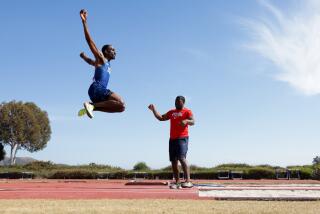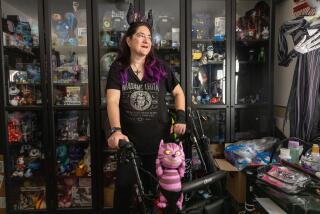Op-Ed: It’s easier than you might think to make birding more accessible to more people
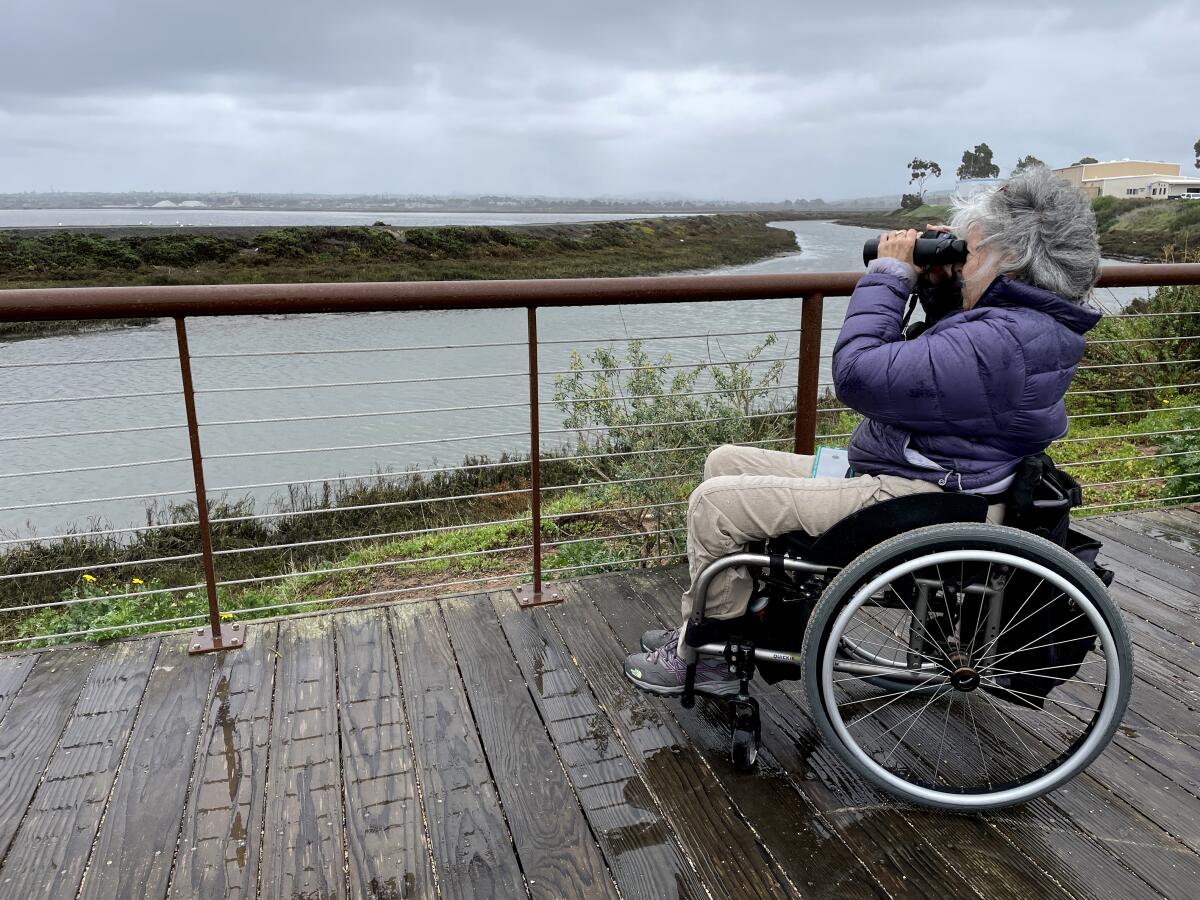
- Share via
Birds bring so much joy to so many people. Their presence and our delight in them can connect us to the natural world. And with so many health benefits to spending time outside, birds can be the prompt to get a dose of nature therapy.
Some have turned this connection into a verb: “to bird.” As a bird lover and an occupational therapist, I think it’s time we expanded how we think about birding, and who can be a birder.
People who are blind or have low vision might not be bird-watchers but can certainly enjoy birds by listening to them. Binoculars, often seen as a necessity for birders, are only a tool, and a tool that not everybody can afford, lift, carry or use. The image of people walking down a trail is also misleading: You don’t need to be able to walk to enjoy birds from a bird blind, or while sitting next to a lake. You can appreciate birds in your backyard, even from inside your home.
I know a birder who has been blind since birth, and so birds entirely by ear. Many sighted birders, eager to include him in their outings, describe birds’ colors to him, but he tells me descriptions of the birds’ behavior is much more interesting, and he loves imagining what a hawk soaring might look like.
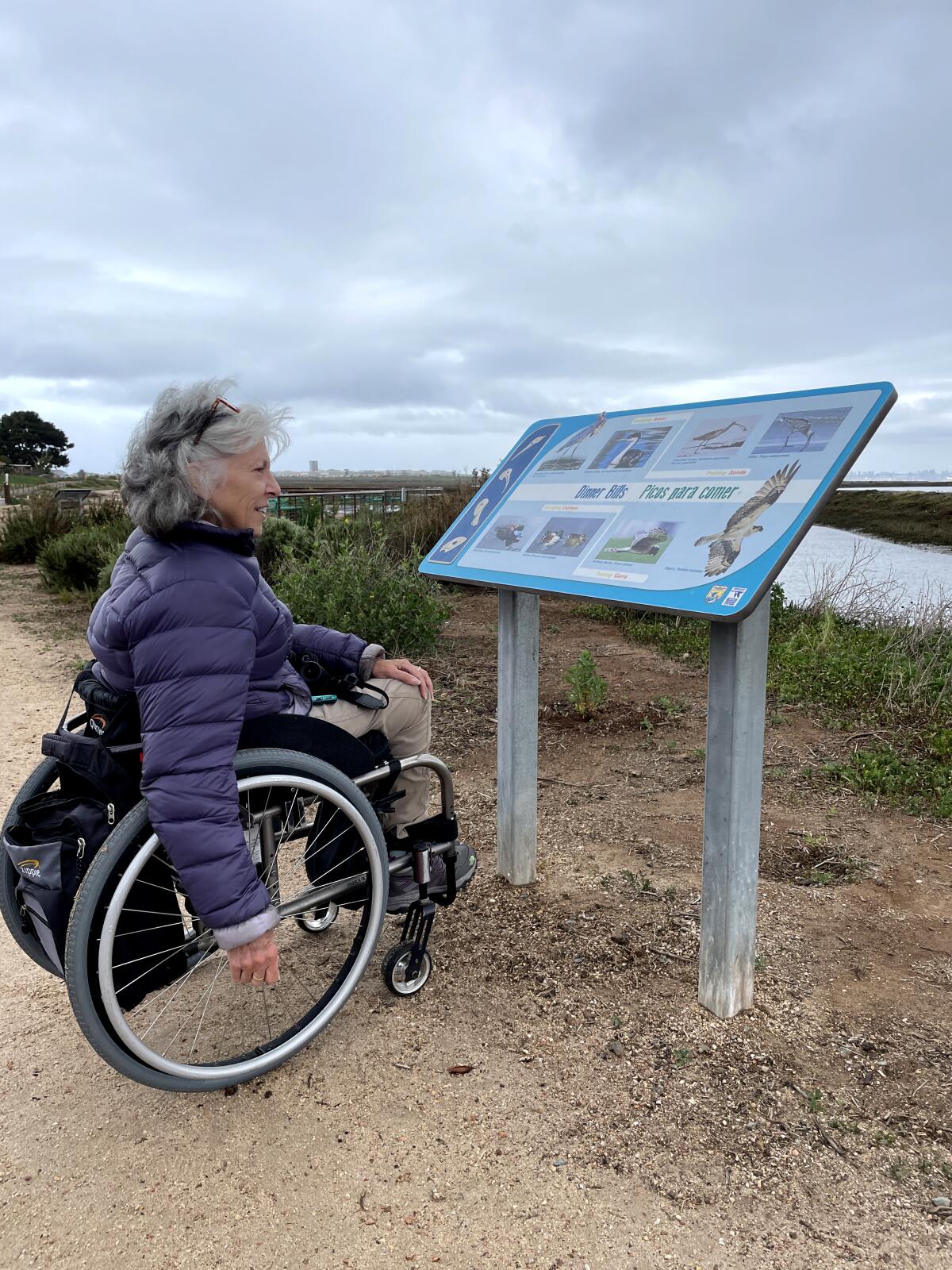
An birder with autism whom I know appreciates trails with a guide rope and tactile signs of 3D birds to feel. These access features were probably planned for visitors who are blind or who have low vision, but many people appreciate the opportunity to engage more senses when learning.
One might imagine that Virginia Rose, the founder of a group called Birdability who has been using a wheelchair for more than 40 years, birds only from paved trails. But Virginia’s favorite trail surface is hard-packed dirt, and she will happily head off through mud or open fields to catch up with a “lifer” (a bird she has never heard or seen before).
According to the Census Bureau, 1 in 4 Americans live with a disability. That shouldn’t preclude them from visiting many birding sites. But many nature centers and other outdoor spaces are not truly accessible, and site managers often don’t have the information to know how to address this.
For example, there is a wonderful birding spot in Tecolote Canyon Natural Park in San Diego. However, a stretch of gravel at the trailhead creates a needless barrier for folks with mobility challenges. That’s the kind of situation that could be readily improved.
Although many birding sites are supposed to comply with the Americans with Disabilities Act Accessibility Guidelines for Buildings and Facilities and with the Architectural Barriers Act’s accessibility guidelines for outdoor developed areas, neither policy goes into enough detail to accommodate the diversity of disability when it comes to birding outdoors.
These laws — when they do cover features such as components of bathrooms or parking availability — should be considered the bare minimum.
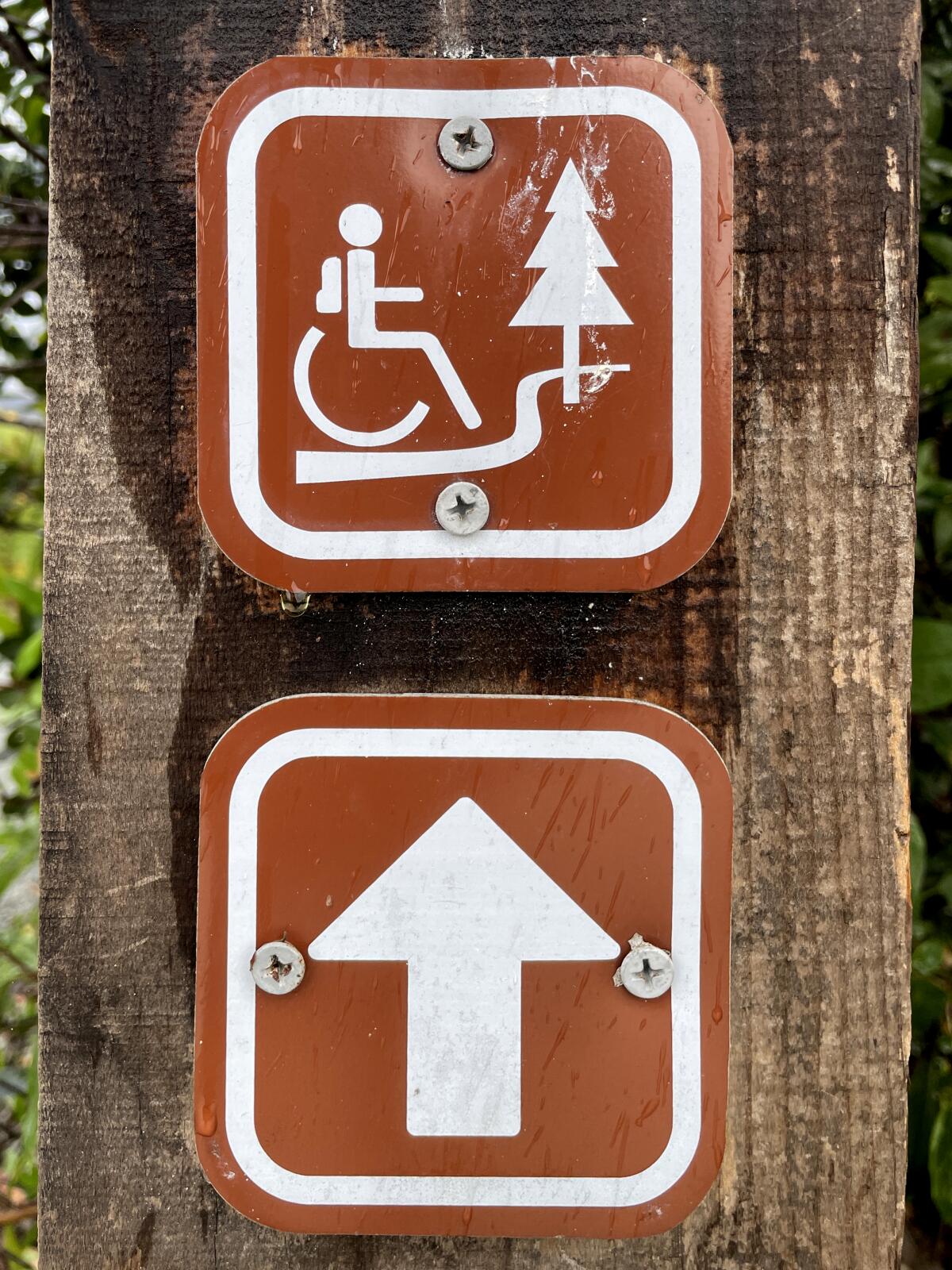
The U.S. Forest Service has detailed trail accessibility guidelines, but these govern only new trails that connect to other accessible trails in national forests, and, again, are missing some key features such as accessible interpretive signs and safety barriers to minimize visual obstructions for seated visitors.
Birdability, the nonprofit that Virginia founded, is aiming to bridge these knowledge gaps. The organization’s “access consideration guidance” provides site managers with recommendations, which naturalists, interpretive guides and bird outing leaders also need to know. Another issue is the general lack of detailed trail descriptions for people with access challenges (“Our accessible trail is 0.5 miles long” is insufficient.) The fact is, anyone using outdoors spaces would benefit.
Birders have a long tradition of sharing information with one another. (“Have you seen that vagrant painted bunting? It’s over by the north shore of the lake!”) And birders love to inspire others with the excitement of birds. It’s not such a leap for birders to share accessibility information to invite more people into the world of birding.
The Birdability Map, for example, is a crowd-sourced global map, which covers 19 access considerations that allows people to decide for themselves whether a birding location is suitable for their needs. This is one online resource that allows birders to find the information they need ahead of time.
After all, birding and the outdoors should be for everybody and every body.
Freya McGregor is an occupational therapist and Birdability’s director of programs and outreach.
More to Read
A cure for the common opinion
Get thought-provoking perspectives with our weekly newsletter.
You may occasionally receive promotional content from the Los Angeles Times.

